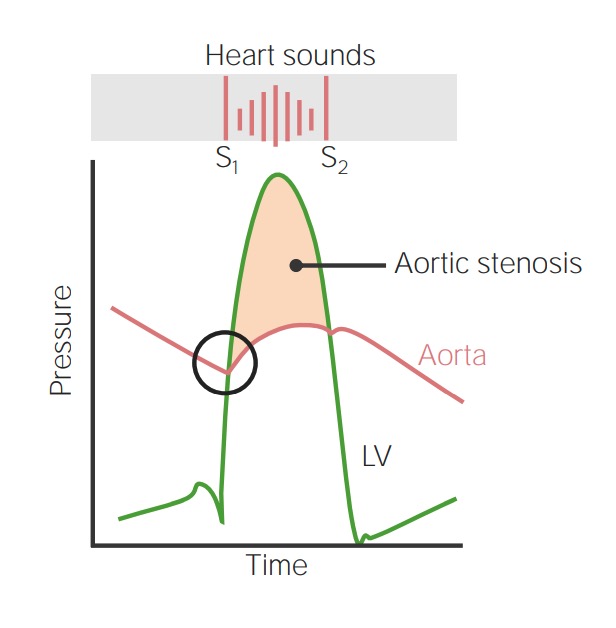Playlist
Show Playlist
Hide Playlist
Aortic Stenosis: Diagnosis and Treatment
-
Slides ValvularHeart DiseaseAorticStenosis CardiovascularPathology.pdf
-
Download Lecture Overview
00:01 Echo, what are you going to find on actual ultrasound of the heart? Why are you going to find an enlarged left ventricle? What about the EKG? It will show you what is known as left ventricular hypertophy but how do you know? This is going to be as soon as left axis deviation. Do you remember this? I know many of you have done this with EKG. You have done thumbs up and you have done one thumb up and one thumb down. So what you are comparing here is lead I and aVF. I'm going to walk you through this quickly because this is physio, I expect you to know this ready. Lead I and aVF two thumbs up fantastic. You have normal axis deviation. Normal axis, approximately 60 degrees. There you go. If lead I is thumb up, aVF is thumb down that is not good. Your left axis deviation, that will be left ventricular hypertrophy. At least know that axis deviation before taking any type of licensing exam please. 00:56 Management, what are you trying to do? Well you want to make sure that you get the stenosis as early as possible. Try to see as to whether or not with blood pressure medication, precaution must be utilized. Ultimately though if your stenotic aortic valve was bad enough and you start getting into heart failure, then your only method of truly correcting your patient is through surgery and replacement of that aortic valve. 01:24 Lastly rule of 5, 3 and 2 is extremely pertinent. If the patient die within five years, you are thinking about angina. Why is that angina once again? Tell me about the left ventricular thickness. It is increased. There is a lot of muscle in which you need to supply oxygen, well if you can, properly. Well if you do not, replace that valve, your patient is going to die within five years. Rule of 5. If the patient has syncope due to aortic stenosis, that is not good. Mean to say what? Feeling dizziness. Why? Lack of cardiac output. Not good. And so therefore three years. If not, properly replaced. If the patient and the doctor was negligent or the patient waited long enough before coming in to see you and patient now shows you signs of congestive heart failure. If that valve isn't replaced, a measly two years. 5, 3, 2. Pretty much everything that you need to know about the pathogenesis of aortic stenosis has been discussed in this lecture. If there is any questions that you might have, you might want to go back and review some of that physiology so that you boster every aspect of what you need to know here. You are in good hands. Just make sure that you use your resources properly.
About the Lecture
The lecture Aortic Stenosis: Diagnosis and Treatment by Carlo Raj, MD is from the course Valvular Heart Disease: Basic Principles with Carlo Raj.
Included Quiz Questions
Which of the following ECG changes is found in a patient with aortic stenosis?
- Left axis deviation
- Left atrial enlargement
- Right ventricular hypertrophy
- Right axis deviation
- Right bundle branch block
What presentation confers the worst prognosis in a patient with aortic stenosis?
- Congestive heart failure
- Atrial fibrillation
- Angina
- Syncope
- Hypertension
Which of the following ECG characteristics depicts left axis deviation in aortic stenosis?
- Positive deflection in lead I and negative deflection in lead aVF
- Positive deflection in lead I and lead aVF
- Negative deflection in lead I and lead aVF
- Negative deflection in lead I and positive deflection in lead aVF
- Positive deflection in lead I and negative deflection in lead aVL
Customer reviews
5,0 of 5 stars
| 5 Stars |
|
1 |
| 4 Stars |
|
0 |
| 3 Stars |
|
0 |
| 2 Stars |
|
0 |
| 1 Star |
|
0 |
top lecture from my man, only writing this to submit 5 star review




